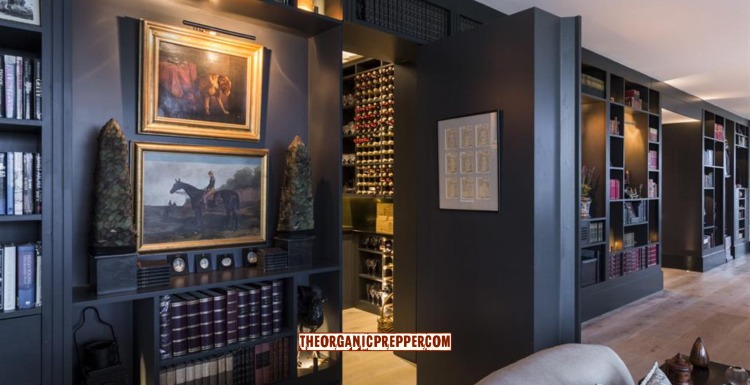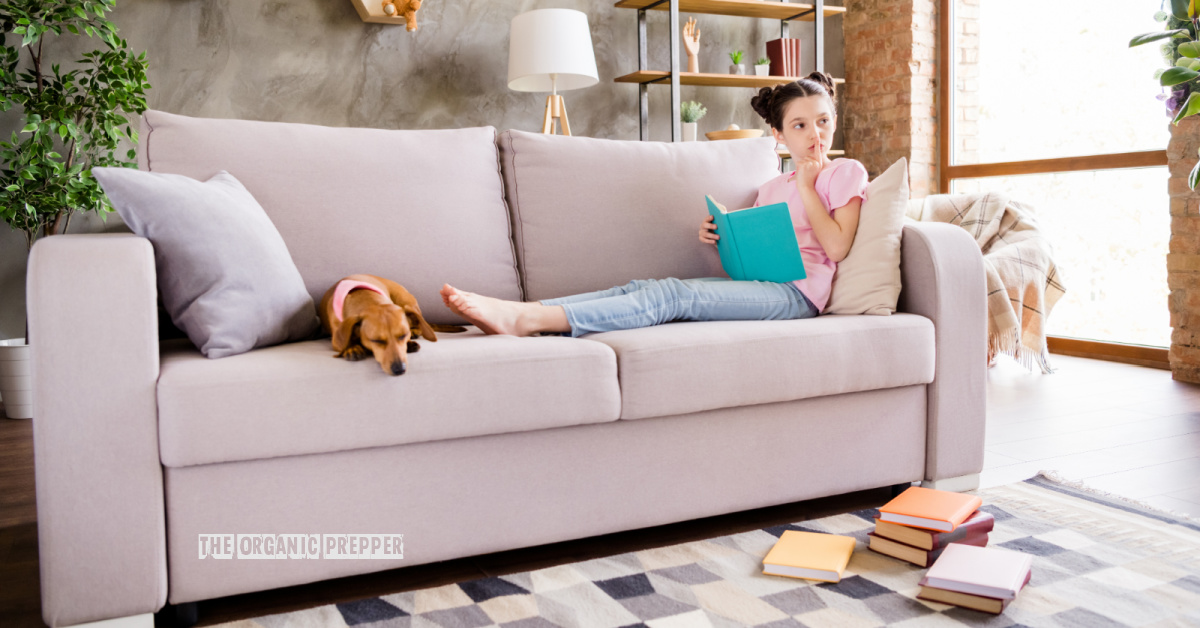- Prepped & Ready™
- Posts
- 🚪 Safe Room Essentials: Creating a Secure Sanctuary Within Your Home
🚪 Safe Room Essentials: Creating a Secure Sanctuary Within Your Home

 | ❓Trivia Question❓ |
Greetings, Prepped and Ready Community!
😗In this edition of our newsletter, we're focusing on safe room essentials and how to create a secure sanctuary within your home.
🔗A safe room, also known as a panic room or fortified room, is a designated space designed to provide protection and security during emergencies or intrusions. Whether you're preparing for natural disasters, home invasions, or other threats, a safe room can offer peace of mind and a sense of security for you and your loved ones.
📍Join us as we explore the key elements of safe room design, essential supplies, and strategies for maximizing safety and comfort.
🚪Let's fortify our homes and create a haven of safety in times of need.
🚨 Understanding the Basics:
📍When it comes to creating a safe room within your home, strategic planning and attention to detail are key.
📍In addition to fortifying the physical structure and stocking up on emergency supplies, it's essential to prioritize comfort and convenience for you and your loved ones.
📍Let's explore some practical tips to enhance the functionality and livability of your safe room:
📢 Tips to Safety:
🔒 Tip #1 Location and Design:
Choosing the right location and design for your safe room sets the foundation for its effectiveness. Opt for a location that is easily accessible in an emergency yet discreet and well-concealed to avoid detection by intruders.
Reinforce walls, doors, and windows with ballistic-resistant materials, and install a sturdy, lockable door for added security.
🔦 Tip #2 Emergency Supplies:
Stocking your safe room with essential supplies is crucial for surviving an emergency situation.
Make sure to include ample food and water to sustain you and your family for an extended period, along with first aid supplies to address any injuries.
Communication devices such as two-way radios or cell phones, flashlights with extra batteries, and a battery-powered radio for receiving emergency broadcasts should also be readily available.
🛏️ Tip #3 Comfort and Convenience:
While safety is paramount, comfort and convenience should not be overlooked in your safe room design.
Ensure your safe room is equipped with comfortable furnishings such as sleeping bags, blankets, and seating to provide a sense of normalcy during extended stays.
Consider adding entertainment options like books, games, or a portable DVD player to help pass the time and alleviate stress.
🔒 Tip #4 Backup Power Source:
In the event of a power outage, having a backup power source for your safe room is essential.
Invest in a reliable generator or battery-powered backup system to keep essential devices and communication equipment operational.
Additionally, consider installing solar panels or a wind turbine to harness renewable energy and reduce your reliance on the grid.
🚪 Tip #5 Secondary Escape Route:
While the primary purpose of a safe room is to provide a secure retreat, it's important to have a secondary escape route in case of emergency. Designate an alternative exit from your safe room, such as a window or hidden door, that can be used if the primary exit is blocked or compromised. Practice using this escape route with your family members to ensure everyone knows what to do in a crisis.
🚨Advanced Signaling Techniques:
📢 Signaling for Help: Use a combination of short and long blasts to indicate your location, direction of travel, and the severity of your situation.
📢 Coordinating with Rescue Teams: Establish communication protocols with rescue teams, such as using one blast to acknowledge their presence and two blasts to indicate your readiness for extraction.
🤓WATCH AND LEARN🤓
This video provides practical tips for creating a safe room or storm shelter in your home's basement. It covers choosing the best location, stocking essential supplies like food, water, backup power, and communication tools, and customizing the space to meet your family's needs.
📢The video aims to help viewers enhance their home's security and prepare for emergencies, whether natural disasters or other threats. It emphasizes the importance of having a fortified, resilient safe haven within your residence
🤣 Joke of the Day🤣
Why did the burglar bring a flashlight to the safe room?
Because they heard it was the brightest room in the house!
📚 Further Readings📚
These articles offers comprehensive information on safe room essentials, construction, and preparation, providing valuable insights for creating a secure sanctuary within your home.
🗺️ Did You Know?🗺️
🛠️ Safe Rooms:
Have been used for centuries as a secure retreat during times of danger or threat. From ancient castles to modern homes, the concept of a fortified sanctuary remains a timeless solution for personal safety.
📚Becoming a popular feature in residential properties, offering protection against various threats, including intruders, severe weather, and civil unrest. By investing in a safe room, homeowners can enhance their security and peace of mind.

📣Essential Safety📣
📣1. Location, Location, Location: Choose a central location within your home for easy access in case of emergency. Basements, ground floors, or interior rooms without windows are ideal choices.
📣2. Reinforced Walls and Doors: Install sturdy walls and doors made of steel or reinforced materials to withstand forced entry and provide maximum protection.
📣3. Communication and Surveillance: Equip your safe room with a two-way communication device, such as a cellphone or two-way radio, to call for help or communicate with family members outside. Consider installing surveillance cameras for added security.
📣4. Emergency Supplies: Stock your safe room with essential supplies, including water, non-perishable food, a first aid kit, a flashlight, batteries, and a portable toilet or sanitation supplies.
📣5. Comfort and Entertainment: Create a comfortable environment with seating, blankets, and entertainment options like books, games, or a portable DVD player to help pass the time during extended stays.
📣6. Backup Power: Ensure your safe room is equipped with a backup power source, such as a generator or battery-powered device, to maintain communication and lighting during power outages.
📣7. Secure Storage: Install a secure storage unit or safe within your safe room to store valuables, important documents, and emergency cash.
📣8. Air Filtration: Consider installing an air filtration system or keeping a supply of N95 masks in your safe room to protect against airborne contaminants in case of chemical or biological threats.
📣9. Emergency Escape Plan: Develop a clear evacuation plan and designate a secondary exit from your safe room in case the primary exit is compromised.
📣10. Practice, Practice, Practice: Regularly review and practice your emergency procedures with family members to ensure everyone knows what to do in case of an emergency.
🌐 Visit Our Website 🌐
Looking for more tips on home security and emergency preparedness? Head over to our website Prepped-and-Ready.com for expert guides, product recommendations, and community discussions. Let's fortify our homes together!
🗣️ Interactive Challenge: Can you come up with your own emergency whistle signal and tell us what it means? Share your creative signals with the community!
Let's Practice! Poll Time!Do you currently have a safe room or designated safe area in your home? |
📢With these whistle signals in your arsenal, you're equipped to communicate effectively and efficiently in any survival situation. Stay vigilant, stay safe, and keep whistling!
📢By mastering the art of emergency whistle signals, you're not only enhancing your own survival skills but also contributing to the safety and well-being of your fellow adventurers. Keep exploring, keep learning, and keep signaling your way to safety!
📢P.S. Share your favorite whistle signal stories or tips with us on social media using #EmergencyWhistle or Reply to this email! Let's inspire and empower each other to be masters of survival communication.
Happy whistling and stay safe out there!
Prepped and Ready Team
💡 Answer to Trivia Question:
The four essential items to include in a basic emergency preparedness kit are water, food, shelter, and first aid supplies.


